Reproduction of dieffenbachia at home
Indoor plants have long been the most exquisite decoration of the house, as they give a feeling of comfort and peace. Dieffenbachia is one of the most beautiful domestic flowers. Reproduction of dieffenbachia at home is a simple process, but it requires some skill and knowledge. In addition, the indoor flower is quite unpretentious and easy to care for, but very effective.
In this article, you can find up-to-date information on how dieffenbachia reproduces at home, a description and recommendations for each method.
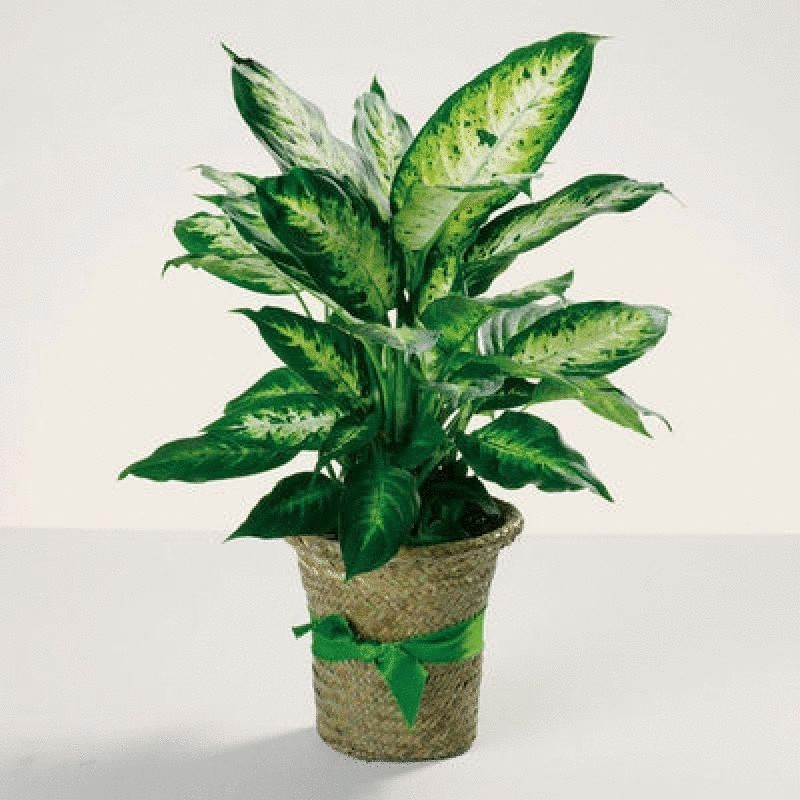
Content
General characteristics of the plant
Dieffenbafia belongs to the category of evergreen plants belonging to the Aroid family, brought to Europe from America and Asia.
The plant is, as a rule, one juicy fleshy powerful stem, which is crowned with a crown of oval leaves. The plant is prized for its decorative qualities, so it is often cultivated at home.
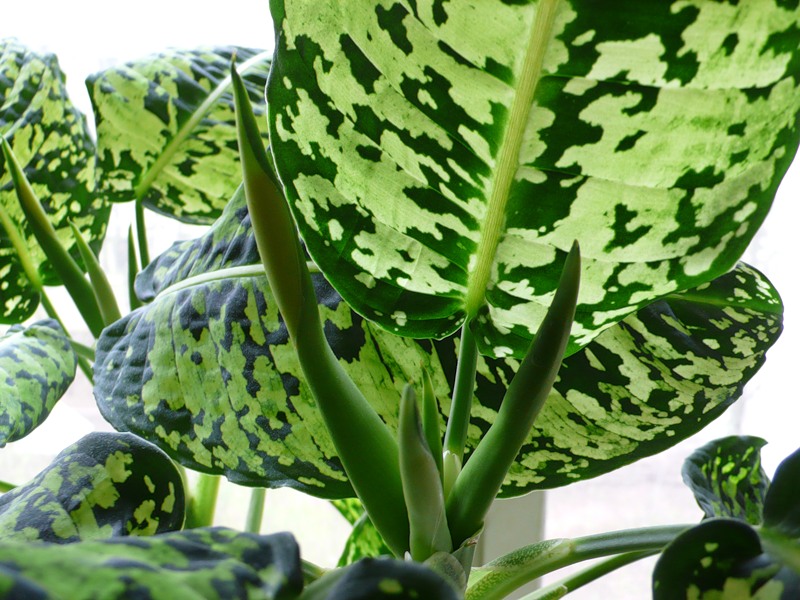
Important! Dieffenbachia juice is very poisonous. In humans, if it gets on the skin, it can cause dermatitis. When working with this flower, you must use gloves made of impervious material. It is also necessary to keep the flower out of the reach of children and pets.
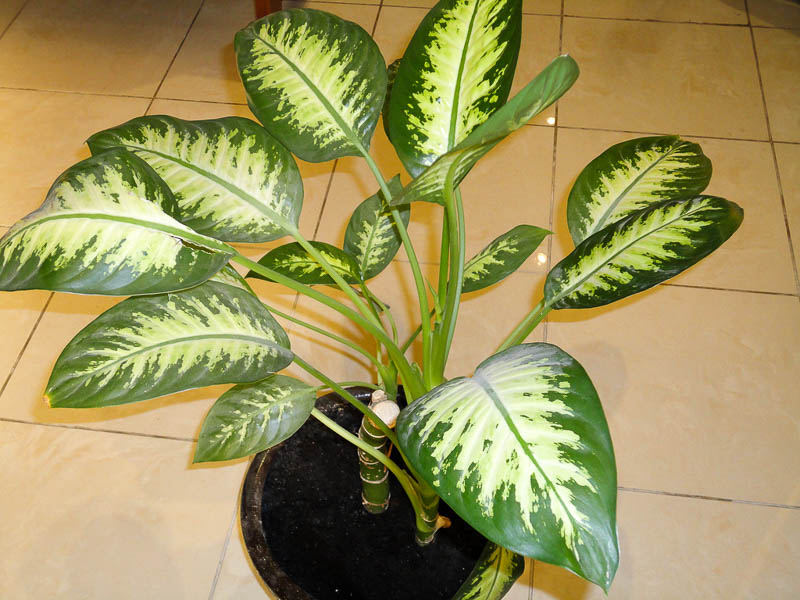
Video: home care for dieffenbachia
Breeding methods of dieffenbachia at home
This plant can reproduce in various ways, so even for beginner growers it will not be difficult to choose the best option for themselves.
Dieffenbachia usually reproduces in two main ways:
- Vegetative, that is, the way of propagation by parts of a plant, for example, a stem.
- Generative, that is, a method of propagation by pre-pollinated seeds.
What is the best way to propagate dieffenbachia? The simplest methods of propagation of dieffenbachia are vegetative methods. To do this, you need to root one of the parts of dieffenbachia. Reproduction of dieffenbachia of a generative nature, as a rule, at home is practically impossible, since the plant blooms very rarely.
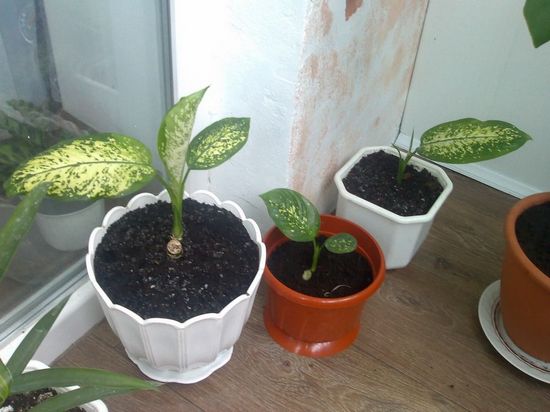
Propagation by cuttings
How to propagate dieffenbachia by cuttings? It is best to do this in the spring, although based on its unpretentiousness and ease of care, you can use it at any time of the year.
Cuttings are portions of the stem, about ten centimeters long. The cuttings should be young and fresh, with a light green color. They should be free of stains and damage.
For cuttings dieffenbachia, cuttings can be rooted both in water and in the ground.
Rooting in water
For rooting in water, cuttings must be placed in a jar of water. For disinfection in water, you must dissolve an activated carbon tablet.
Important! The water in which the cutting takes root must be changed at least once a week in order to prevent decay of the planting material.
There are a number of simple rules, following which you can successfully propagate dieffenbachia:
- The jar with the handle should be in a warm place, while positioning it so that direct sunlight does not fall on it.
- It is advisable not to put several cuttings in the jar at once, since under such conditions the chance of their decay increases.
- For better root development, you can use a preparation of the "root" type.
Important! Regular pharmacy aloe juice in the amount of two drops per half liter of water can significantly activate the vitality of the plant and increase the chances of successful reproduction.
The roots will appear in no more than one to two weeks. When they reach up to two centimeters in length, they can be planted in the soil approximately two to three centimeters deep.

Rooting in the ground
How to root dieffenbachia in the ground? In order for the cuttings to successfully root in the substrate, it must be prepared in a special way.
Substrate composition:
- peat;
- perlite or vermiculite.
The proportion of parts is approximately equal.
There is another version of the land, favorable for the propagation of dieffenbachia by cuttings, the soil should contain:
- peat soil;
- sphagnum;
- vermiculite or perlite.
Sphagnum should occupy about half of the total soil volume. The rest of the parts are applied in equal proportion to each other. This kind of soil has a number of advantages over other types of substrate, namely:
- lightness, allowing the roots to be saturated with oxygen;
- porosity, which makes it possible to evaporate excess moisture;
- friability, due to which young roots easily grow through the earthen ball.
Important! In order to avoid root decay, it is necessary to add activated carbon to the substrate, based on the ratio: one tablet per half liter of soil.
For successful reproduction of dieffenbachia by cuttings, its rooting in the soil is carried out according to the following algorithm:
- cut off the stalk;
- dry within 24 hours;
- hold in the "root" solution for five to nine hours;
- plant in the ground to a depth of five centimeters;
- cover with a transparent impermeable material (film, bag) to create a greenhouse effect.

Important! For dieffenbachia, greenhouses are relevant only during the cold season, when the cuttings need to maintain a constant temperature.
Video: propagation of dieffenbachia by cuttings
Top propagation
The top, strictly speaking, is also a cutting, with the only difference that it is cut on top of the plant, in a place located slightly below the last bud.
The advantage of propagation of dieffenbachia with a tip is that they allow you to quickly get an almost adult plant with high decorative qualities.
The apex is cut off in the following cases:
- with the loss of an adult plant of a beautiful appearance due to the falling of the lower leaves;
- at the first signs of decay of the root system.
Note! Trimming the top in some cases helps to save the plant affected by the disease.
Apex rooting stages:
- cut off the top;
- put in water with the addition of activated carbon;
- provide bottom heating if the room temperature is below 22 degrees;
- change water once a week;
- when the roots reach a size of up to three centimeters, plant the seedlings in the ground.
The soil is prepared in the same way as in the first case. In addition, there are a number of grades of special soil suitable for the described plant, including:
- Seliger;
- "Vermion".
When rooting the tops in the ground in the cold season, a mini-greenhouse does not hurt.
Important! The greenhouse must be opened at least once a day to prevent condensation from accumulating on the plant. This can lead to decay.
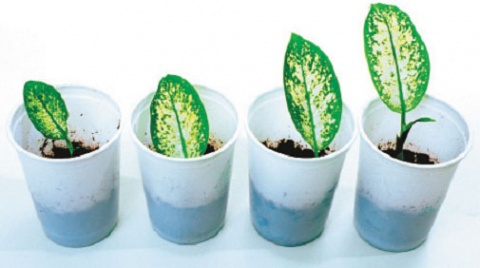
Video: how to propagate and transplant dieffenbachia
Stem propagation
Propagation of dieffenbachia stem is necessary when the plant needs rejuvenation. This is determined by the following criteria:
- the trunk is rough, covered with a brown "scab";
- the lower leaves have fallen off, the trunk is bare;
- the middle leaves begin to turn yellow.
In order to root the shoot, you need to find the so-called growth point, that is, the place where the leaves begin to diverge. It is necessary to cut off the shoot about seven centimeters below this point.
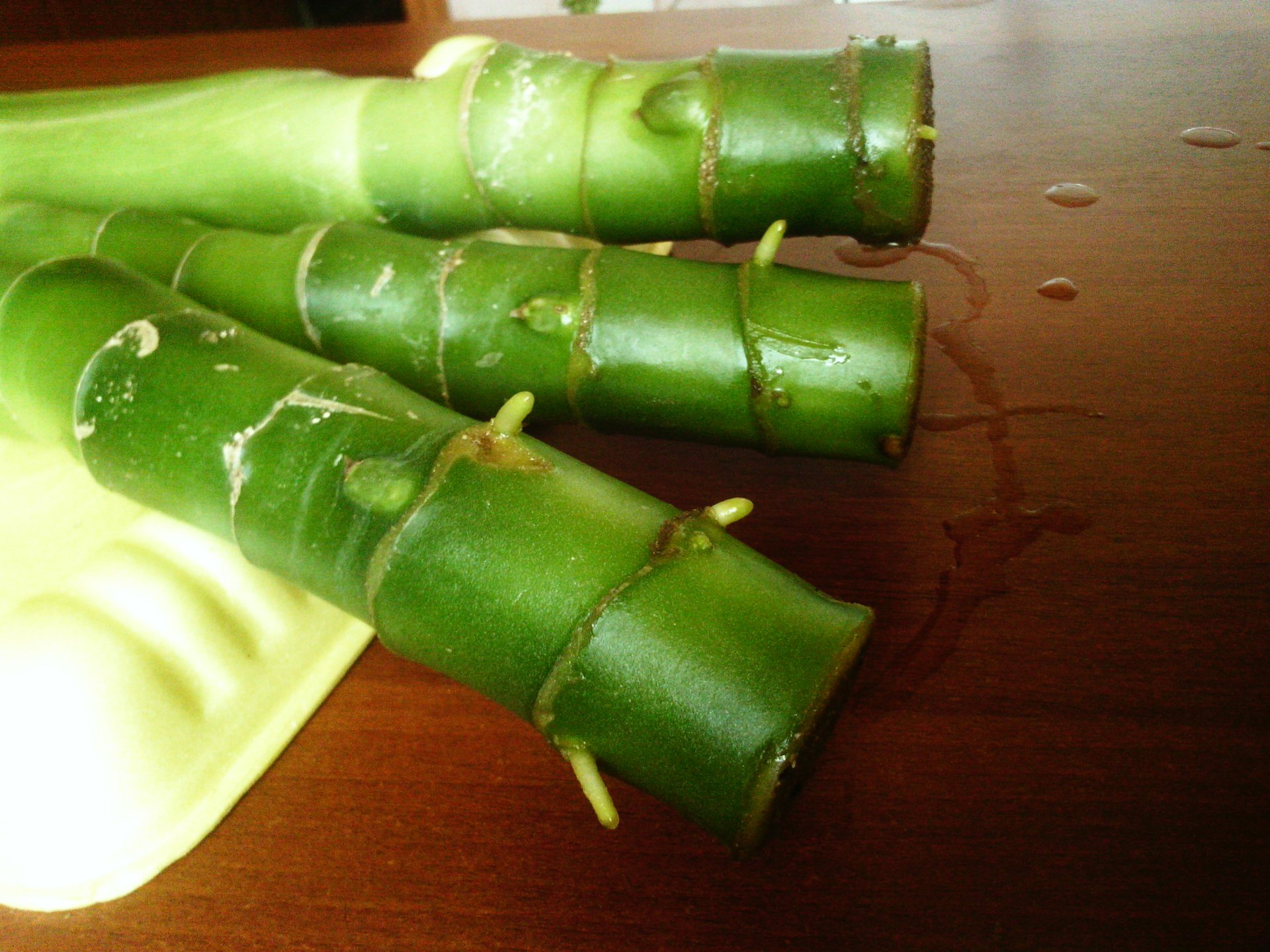
Rooting for propagation of dieffenbachia stem cuttings is carried out according to the following algorithm:
- the stem is cut off;
- planting material is dried;
- the stem is buried in the substrate;
- fits in a greenhouse.
Important! The shoot may not show signs of development and growth for up to six months. This is normal as the stem needs strength and nutrients for root development.

Leaf propagation
With such a reproduction of dieffenbachia at home, the leaves of the plant act as planting material, quite developed, but not old, without damage and spots.
To propagate dieffenbachia with a leaf, perform the following steps:
- cut off the selected sheet;
- dry it;
- put in a glass of water;
- when the first roots up to two centimeters appear, plant the sheet in a substrate under the greenhouse.
The leaf can also be rooted directly into the substrate, but this is a more risky method, as the roots can rot.

Reproduction by shoots
Rooting daughter shoots is a great way not only to propagate dieffenbachia, but also to rejuvenate it. These shoots are secondary young formations that interfere with the life of the mother flower.
To propagate a dieffenbachia flower by shoots, the following steps should be followed:
- cut off a daughter shoot with two or three young leaves;
- rooted in water with coal dissolved in it;
- wait for the roots to appear;
- plant in the soil, not forgetting the drainage in the container.
Important! In this case, there is no need for a greenhouse, since the daughter shoot is an almost finished plant.
Division of roots during transplantation
A dieffenbachia transplant is also a great reason to propagate the plant, which will benefit him, since this flower does not tolerate cramped containers.
When dividing the roots, they act according to the following rules:
- remove the plant from the pot along with an earthen clod;
- wash the roots with running water, trying to unbraid them at the same time;
- carefully examine the roots for rot and dark spots;
- if necessary, damaged roots are removed;
- the plants divided into several parts are laid out to dry;
- a day later, dieffenbachia is planted in the finished substrate.
In order to disinfect the roots, they can be washed in a weak solution of potassium permanganate or treated with a solution of activated carbon.
Possible problems with the reproduction of dieffenbachia
The work described above can fail for a number of reasons. As a rule, this refers to violations of the rooting procedure, the creation of the wrong conditions for the flower.
There are a number of the most common mistakes that can lead to plant loss:
- Lack of sterility. All tools, especially cutting tools, must be disinfected.
- Planting containers that are too tight or too wide. Because of this, developmental problems or decay of the root system may arise.
- Root damage during separation.
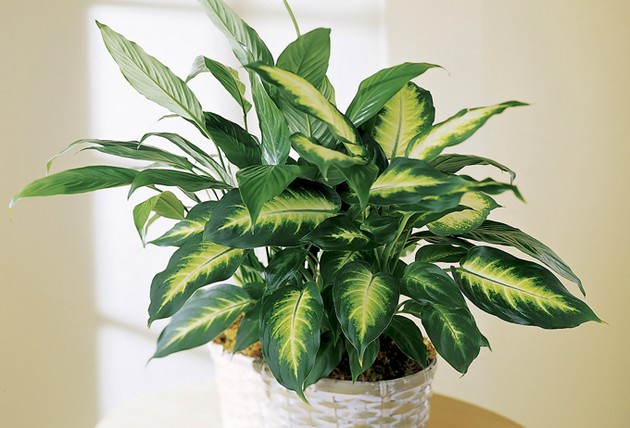
Careful adherence to the directions and instructions will help you successfully propagate dieffenbachia at home, choosing any suitable method for this.


Hello. I didn’t look sighting before, but I remember that the dieffenbachia trunk was a uniformly green color. Now one plant, its stem is covered with pimples, like outgrowths of a gray-yellowish color, and on the other a local area has appeared, which, like a ring, covers the plant. Five centimeters; looks like ... like a belt with bumps. It seems like this has not happened before. Is this nlrma, or rip them off ?? Are these pests ?? Thank you for your help and answer ..
Good day!
Pimples (gray-yellow growths) only on the stems, on the leaves there are none at all?